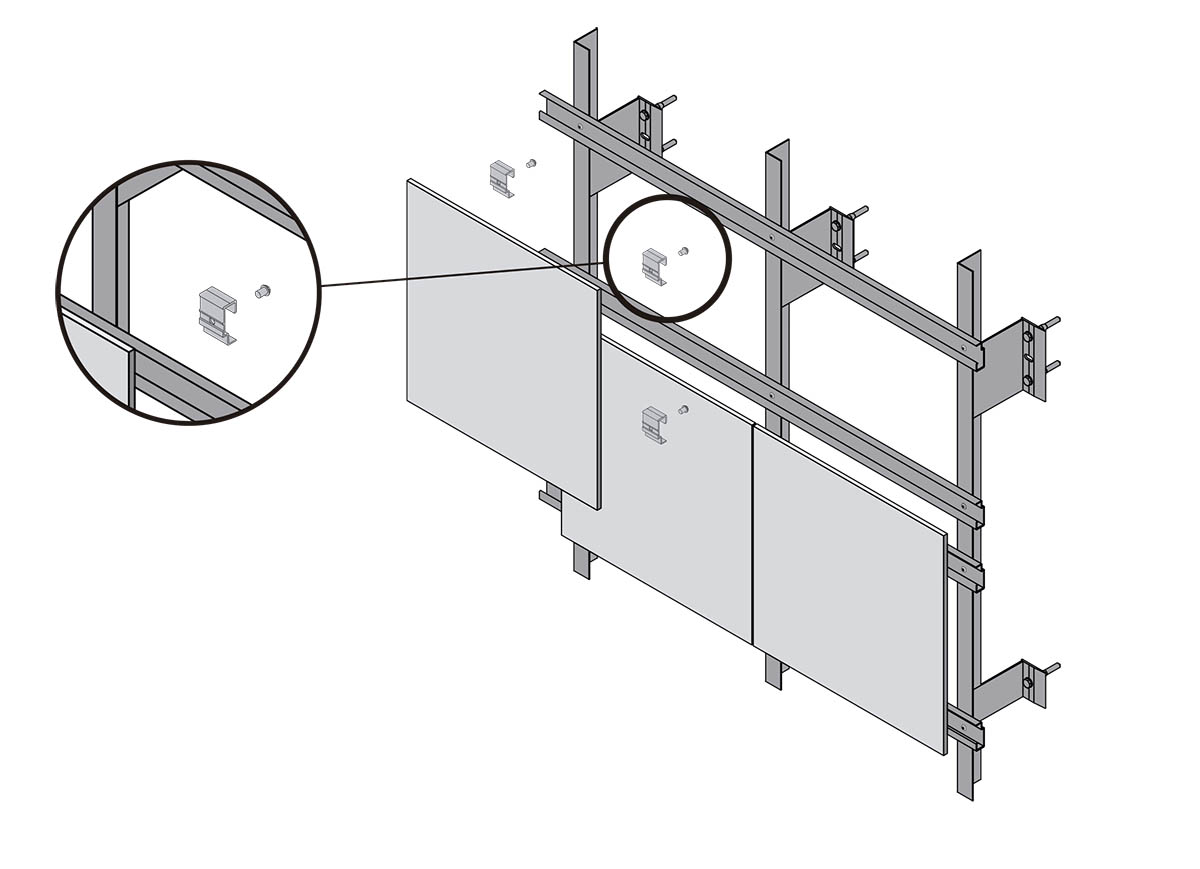
What is a ventilated facade? Operation and advantages Stonesize®
At its most basic, a ventilated façade system consists two layers of different facades which are separated by an air cavity. This cavity prevents rainwater from penetrating and diffuses water vapour from the inside to the outside.

Ventilated Walls, Ventilated Facades, Wall Coverings Fiandre
In the ventilated facade system, the Isopan's sandwich panel Arkwall, consisting of two external metal sheets that enclose an insulating layer in polyurethane or rock wool, is protected from bad.
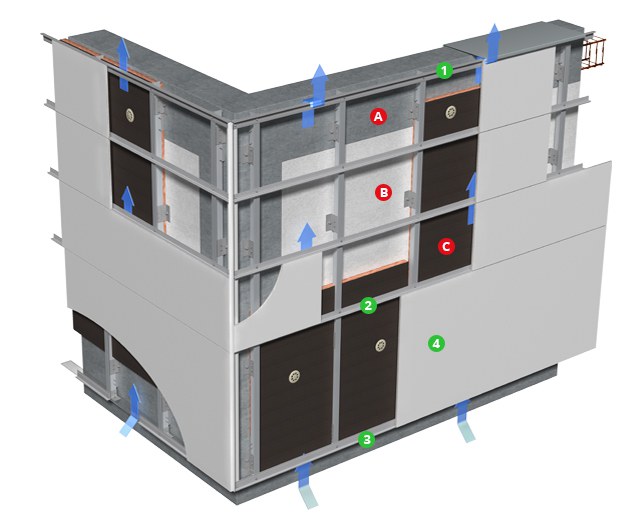
What is a Facade cladding system? — Ventilated facades
Why do we need ventilated facades? A ventilated façade system as a whole protects against adverse weather conditions. As the façade is generally the largest surface area of a building, it's important to consider the relationship between the internal and external environment - and properly insulate the façade to improve heat regulation..

Ventilated Façade
Ventilated Façade Drained and back-ventilated (DBV) Rainscreen Façade Seamless design and installation, unrivaled productivity Hilti's solution for DBV rainscreen façade follows your workflow from engineering design to field installation for every façade project. Submit your project for a quote Download Façade Solutions Flyer Take a look Loading

Emimar Hinged ventilated facades
Ventilated Facade Systems. Ventilated Façade Systems offer flexibility as an ideal solution to enhance the aesthetics of every type of space, breathability for the facility, high protection against the elements and maximize thermo acoustic insulation. The ventilated system is the most functional solution for the protection and energy.

Ariostea Ventilated Facades
A thermal building envelope - more commonly known as a ventilated façade - is an outer skin around a building that totally eliminates the thermal bridges responsible for 30% of energy losses from buildings. It creates a safe, efficient, sustainable barrier between the outside environment and inner atmosphere of the building. A ventilated façade is an unbeatable solution since it.
.jpg)
THE VENTILATED FACADES IN ARCHITECTURE
The ventilated facade is an enclosure system that allows an insulating layer and an outer leaf to be placed on top of an inner leaf by means of a supporting structure. The separation distance between the layers allows a current of air to pass between the insulation and the coating, generating a "chimney effect" that creates natural ventilation.

Facade system Energysaving ventilated facade system SCANROC (Knauf
Ventilated facade system. A ventilated façade is a multi-layered building envelope system that offers diverse options for the cladding material (steel elements, stone, concrete boards, timber boards, ceramic, and other composite elements), offering a wide range of architectural options [7], [77]. The external cladding elements are mechanically.

Why Your Building Will Benefit From a Ventilated Façade Danpal
A ventilated facade is an outside wall cladding application in which the ventilation. • A ventilated facade is a multi-layered system, which can guarantee long term functionality; combining functional, economical and aesthetic properties; it insulates and protects the primary structure from weather exposure..
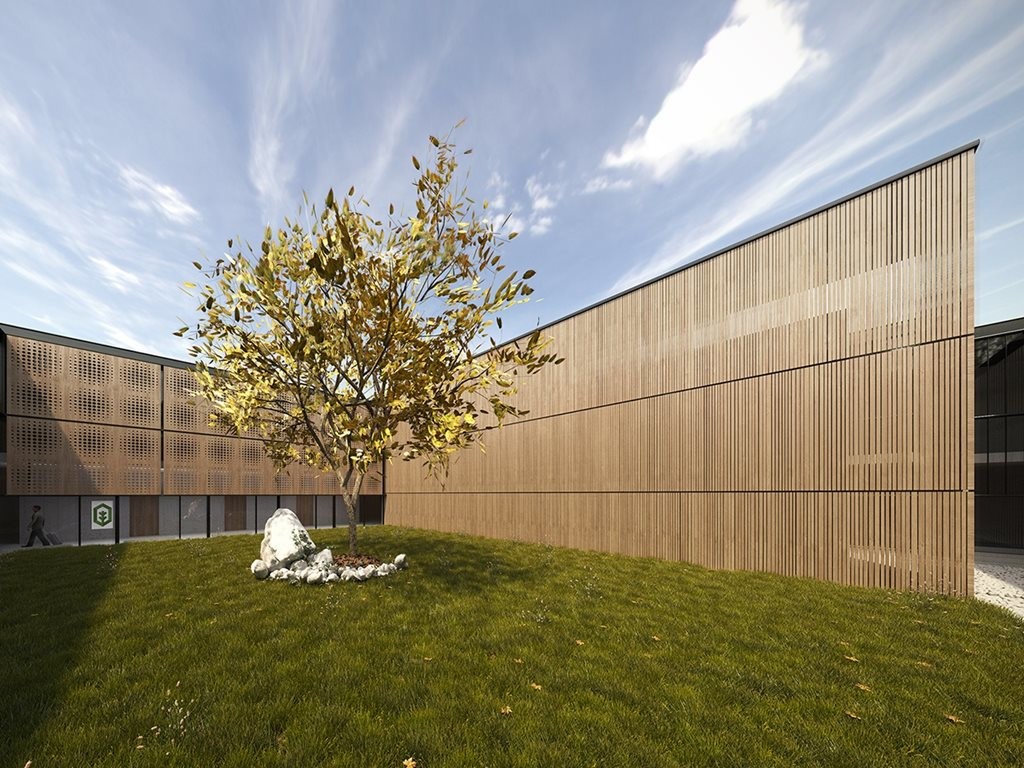
An introduction to ventilated façade systems in modern design
On top of the ventilated facade, the crown blocks water and allows ventilation. The system enables an insulating layer together with an outer leaf to be placed on top of an inner leaf, all through.

Horizontal section ZSystem Minihaus, Haus, Fassade
A ventilated facade is a dry-installed exterior building envelope system. It can be installed on new construction sites or on buildings undergoing renovation. This element provides the building with a gap between its perimeter wall and the exterior cladding.
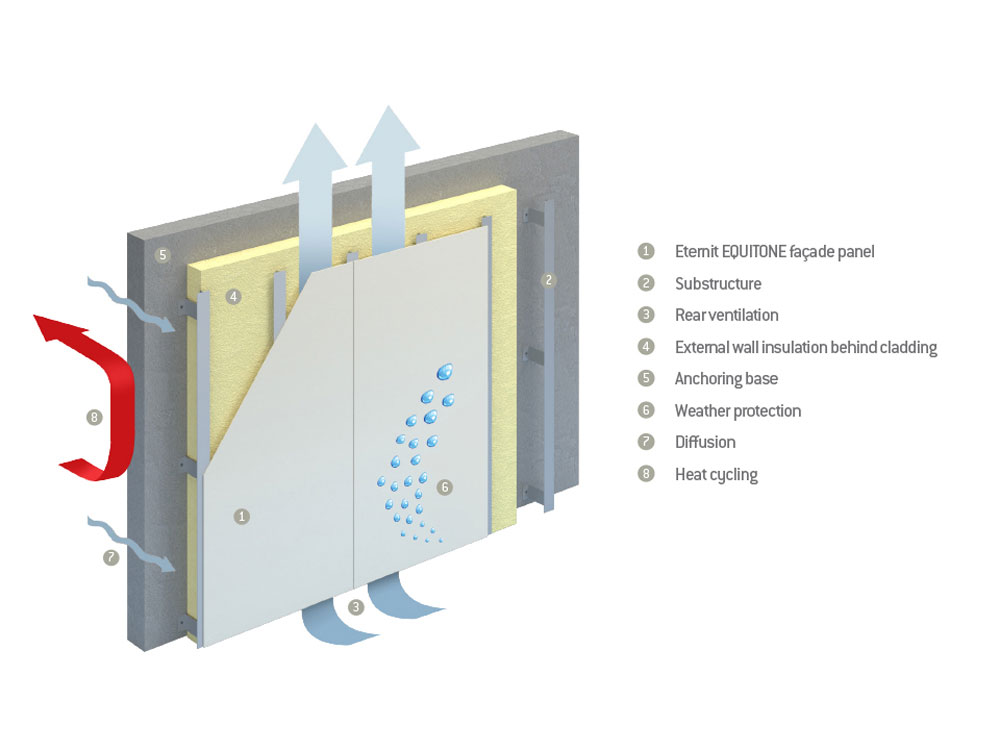
Ensuring durable facades with a rearventilated curtain system
The fastening system with hidden hook The GammaStone Air ventilated system with mechanically fixed hidden hooks offers maximum design and maximum safety. This system eliminates any fasteners visible on the surface of the panel, resulting in a clean façade with the smallest possible joint.
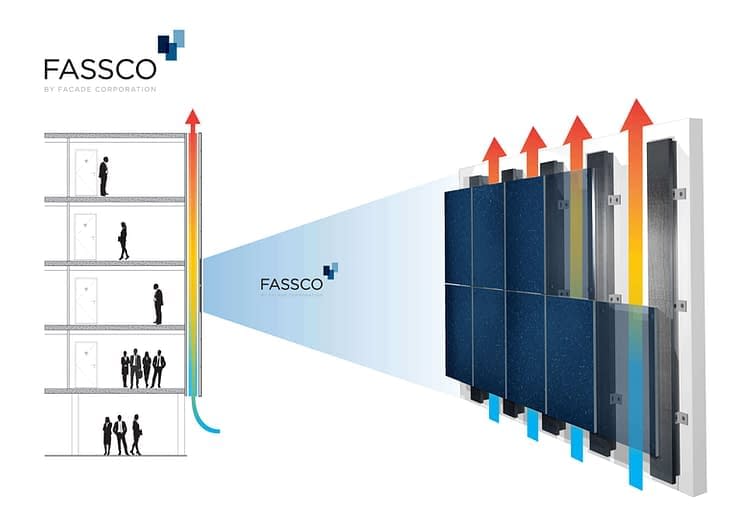
The Benefits of a Ventilated Facade Fassco Magazine
The ventilated facade system creates an air chamber between the insulation and the cladding. The heating of the air in the buffer space relative to the ambient temperature leads to the so-called stack effect, generating continuous ventilation in the chamber.
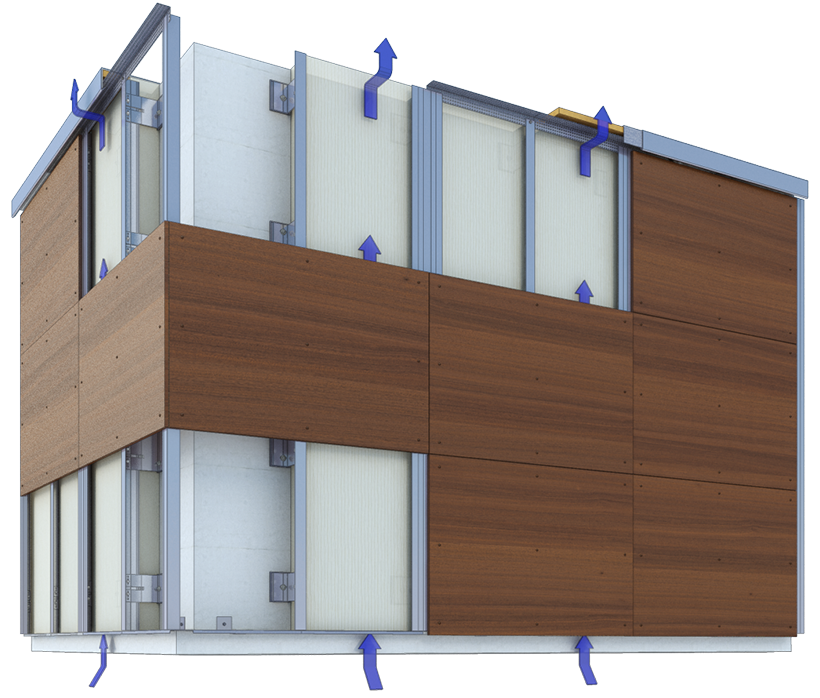
INNOWOOD Ventilated Façade Systems
Ventilated faÇade systems Protect your building's exterior from the elements with our easy to install framing systems for cladding From design through to construction, find out how our team can support you with your next ventilated façade project. Get in touch Loading Planning and Design

Bendheim’s Ventilated Glass Facade System Wins Major Product Awards
A ventilated facade system typically comprises three primary components: Outer cladding: This is the external skin made of materials like metal, glass, ceramics, or wood, which protects the building from weather elements and provides aesthetic appeal.

Emimar Hinged ventilated facades
A ventilated façade (also known as double-skin façades or rainscreen systems) is a construction method offering a physical separation that is created between a building's exterior cladding and its interior wall. This separation creates an open cavity, allowing the exchange of the air contained between the wall and the outer cladding.